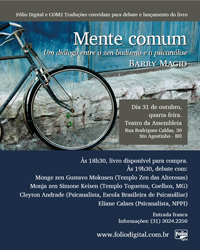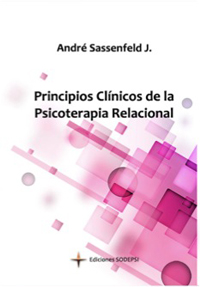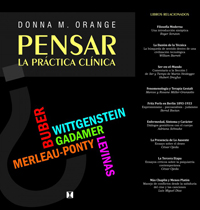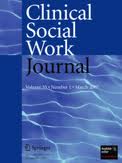 |
The International Association for Relational Psychoanalysis and Psychotherapy |
|
|
|
|
Howard Bacal This book describes and illustrates how therapeutic possibility is co-created in the unique specificity of process of each psychoanalytic dyad. Specificity theory does not provide the practitioner with do’s and don’ts. Rather, through its in-depth focus on the uniqueness of process, it illuminates how the capacities, and limitations, of each dyad centrally determine therapeutic effect in the moment and over time. Established psychoanalytic theories are regarded as generalizations that may expand our observational field, but which may or may not be relevant within the particularity of process of that therapist and that patient. When we fully comprehend the reach of specificity of human relatedness, the application of formal, established theory within the clinical situation becomes more apparent, and is enhanced. The author discusses how current neurobiological perspectives on the structure and function of the brain offer a remarkable neurobiological substrate for specificity theory, and how it articulates with infant research. The book also describes the ways in which sensitivity to the specificity of dyadic and triadic process can enhance the effectiveness of psychoanalytic supervision. Both therapeutic and pedagogic potential are enhanced through understanding how each participant specifically affects the other and how each can respond to the other in their process. In this way, we become better therapists for our patients and better teachers for our students. |
|
|
Beatrice Beebe Click here to read description of this book from IARPP eNews Vol11No1 Click here to see current articles
Beatrice Beebe PhD |
|
|
|
Jack Danielian & Patricia Gianotti Listening with Purpose is a clinical treatment manual for beginning therapists, seasoned practitioners, post-doctoral training institutes, graduate students, and psychiatric residents who are interested in advancing their skills in therapeutic listening and psychodynamic interventions. The approach to training is highly original. Offering a deep sampling of case examples, trainee dialogue, as well as a hands-on model, this book illustrates how recent theoretical advances are useful in understanding the often subtle nuances of treatment intervention. With its simultaneous intrapsychic, relational, and systemic perspective, the text brings into sharp focus a whole range of trauma-related issues of attachment. Endorsements For years, the contributions of Karen Horney, and her prescient anticipation of much in the contemporary relational point of view, have been largely unrecognized or unappreciated. With the publication of this very valuable book, that should no longer be the case. Danielian and Gianotti illuminate the role of shame, dissociation, problematic characterological solutions, and integrative, experience-near theory with admirable clarity and clinical relevance. This is a wonderful teaching tool both for beginners and seasoned practitioners. About the Authors Patricia Gianotti, Psy.D, is a licensed psychologist, clinical supervisor, and a founding member with Woodland Professional Associates, a group private practice in North Hampton, NH Jack Danielian, PhD, is a licensed psychologist, training supervisor, and Dean of the American Institute for Psychoanalysis of the Karen Horney Center. |
|
|
|
|
Carola Kaplan Carola Kaplan |
|
|
Mark Leffert Extending the themes of Contemporary Psychoanalytic Foundations, The Therapeutic Situation in the 21st Centuryis a systematic reformulation of fundamental psychoanalytic concepts, such as transference, therapeutic action, and the uses of psychotropic drugs, in the light of recent developments in postmodernism, complexity theory, and neuroscience. Leffert offers formulations of areas not previously considered in any depth by psychoanalysts, such as power relations in the analytic couple, social matrix theory, and narrative theory informed by considerations of archaeology, genealogy, complexity, memory, and recall. He also considers new areas, such as the role of uncertainty and love in the therapeutic situation. This book is part of an ongoing effort to place psychoanalysis in the current century, and looks to outside as well as inside areas of thought to inform how we work and how we think about our work. Mark Leffert, M.D. has been on the faculty of five psychoanalytic institutes and has been a Training and Supervising Analyst at four of them, most recently the New Center for Psychoanalysis. He has taught and supervised for 35 years. He is the author of many papers and a previous book, Contemporary Psychoanalytic Foundations. His interests focus on an interdisciplinary reformulation of psychoanalysis, drawing on postmodernism, neuroscience, and complexity, and network studies. His future work will center on the self, subjectivity, and the way our understanding of both is impacted by a statistical understanding of heuristics and biases. He maintains a private practice centeredaround psychoanalysis, psychotherapy, and telephone therapy in Santa Barbara, California. Mark Leffert MD |
|
|
|
Barry Magid
|
|
|
|
André Sassenfeld Este libro presenta una visión de conjunto de los pilares fundamentales que sostienen la práctica de la psicoterapia relacional. En su recorrido se examinan en primer lugar las transiciones epistemológicas y filosóficas que han desembocado en la emergencia de un paradigma clínico relacional. Más allá, el libro muestra cómo la aparición de un paradigma relacional en el ámbito de la psicoterapia de orientación analítica ha vuelto indispensable llevar a cabo una revisión y reformulación profundas de las concepciones existentes de lo inconsciente, la motivación y la situación psicoterapéutica. Frente a este trasfondo el autor explora con detalle los principios clínicos que orientan el quehacer de los psicoterapeutas relacionales incluyendo, entre otras cosas, el marco terapéutico, los posicionamientos del terapeuta, y las metas y tareas psicoterapéuticas. En el prólogo del libro, Juan Francisco Jordán, presidente del capítulo chileno de IARPP, afirma: “Éste es un libro que será de mucha utilidad para todos quienes enseñamos y practicamos Psicoanálisis Relacional […] para todos quienes se están iniciando en el conocimiento y práctica de esta perspectiva psicoanalítica y para quienes, no compartiendo la perspectiva expuesta, quieran conocerla en una primera aproximación rigurosa a la misma.” "Clinical Principles of Relational Psychotherapy by André Sassenfeld" (2012, Ediciones SODEPSI, Santiago, Chile, 397 pages) This book presents a general outline of the fundamental pillars that sustain the practice of relational psychotherapy. It examines epistemological and philosophical transitions that paved the way for the emergence of a relational clinical paradigm. The book further shows how the emergence of a relational paradigm in analytically oriented psychotherapy has precipitated a deep revision and reformulation of existing conceptions of the unconscious, of motivation and of the therapeutic situation. This examination provides the background for a thorough exploration of the clinical principles that guide relational psychotherapists´ work including, among other topics, the therapeutic frame, the therapist´s attitudes, and psychotherapeutic goals and tasks. In the book´s preface, Juan Francisco Jordán, president of the Chilean IARPP chapter, states: “This is a book that will be very useful for those who teach and practice relational psychoanalysis […] for those who are introducing themselves to the knowledge and practice of this psychoanalytic perspective and for those who, without sharing the presented perspective, wish to approach it in a first rigorous approximation”. Link for the book: http://www.thepowerofwitnessing.com Contact: marilynbmeyers@gmail.com |
|
|
André Sassenfeld Pensar la práctica clínica: Recursos filosóficos para el psicoanálisis contemporáneo y las psicoterapias humanistas Este libro es la traducción al español de un libro publicado originalmente el año 2010 por Donna Orange. Gira en torno a las fundamentales contribuciones que la filosofía puede hacer a la práctica clínica. En particular, Donna Orange explora los aportes que el pensamiento filosófico de Martin Buber, Ludwig Wittgenstein, Maurice Merleau-Ponty, Emmanuel Levinas y Hans-Georg Gadamer puede realizar a la práctica de la psicoterapia relacional conducida en un espíritu socrático. Al examinar las diversas reflexiones de estos cinco grandes pensadores del siglo XX Orange enfatiza su concepción del quehacer psicoterapéutico como guiado por una vocación humanista y compasiva. Tal como Orange escribe en el epílogo, un hilo conductor significativo del libro es la interrogación ética que interpela cotidianamente a los psicoterapeutas. Este libro acerca de modo comprensible y aterrizado la filosofía a quienes se dedican a la psicoterapia y el psicoanálisis. Thinking for Clinicians: Philosophical Resources for Contemporary Psychoanalysis and the Humanistic Psychotherapies by Donna Orange (2012, Cuatro Vientos Editorial, Santiago, Chile, 170 pages, translation by André Sassenfeld and Francisco Huneeus) This book is the Spanish translation of a book Donna Orange published originally in 2010. It centers on fundamental contributions philosophy can make to clinical practice. In particular, Orange explores relevant aspects of the philosophical thinking of Martin Buber, Ludwig Wittgenstein, Maurice Merleau-Ponty, Emmanuel Levinas and Hans-Georg Gadamer, and their contributions to the practice of a relational psychotherapy conducted in a Socratic spirit. In examining important reflections of these five salient thinkers of the XX century, Orange emphasizes her conception of psychotherapeutic work as guided by a humanistic and compassionate vocation. As Orange writes in the epilogue, a meaningful threat that runs through the book is the ethical interrogation that psychotherapists encounter on a daily basis. This book allows professionals dedicated to psychotherapy and psychoanalysis to approach philosophy in an understandable and grounded way. |
|
|
|
|
Alan Wineburgh I wrote a clinical paper, "Mutual Transformation", that speaks to the healing powers for both the patient and the analyst from their work together as earlier formulated by Ferenczi and Searles. The paper was published online about a month ago by the journal Clinical Social Work and will be published in paper form in the coming months. The online paper can be found at: http://www.springerlink.com/index/100464762724UP05.pdf Alan Wineburgh, L.C.S.W. |
Articles: Since spring 2002, the Project for Mothers, Infants, and Young Children of September 11, 2001, has been providing diverse pro bono therapeutic services for women who were pregnant when widowed by the World Trade Center attacks of September 11, 2001. This primary prevention Project attempted to facilitate grieving in the families and to promote optimal relationships between the mothers and their infants and their older children. This article describes the components of the Project.
Beebe, B. & Markese, S. Theory and Research That Informed the Clinical Approach of the Project for Mothers, Infants, and Young Children of September 11, 2001. Journal of Infant, Child, and Adolescent Psychotherapy, 10, 170-186. We outline the central clinical theories that informed the Project for Mothers, Infants, and Young Children of September 11, 2001. We looked to Bowlby, Winnicott, Mahler, and Ainsworth for the core ideas about the nature of loss and the mother-infant relationship. We also looked to empirical infant research and the microanalysis of videotaped mother-infant interaction to understand early communication patterns. An understanding of nonverbal communication and its use in video feed- back was central to our approach. We also describe early childhood psychotherapy and mother-child support groups.
Beebe, B. Lachmann, F., Markese, S. & Bahrick, L. (2012). On the origins of disorganized attachment and internal working models: Paper I. A dyadic systems approach. Psychoanalytic Dialogues, 22:2, 253-272. Despite important recent progress in understanding disorganized attachment, we still lack a full understanding of the mechanisms of disorganized attachment formation and transmission prior to 12 months. In this paper we lay out our recommendations for the study of the 4-month origins of disorganized attachment. In our subsequent Paper II we report on the results of a large empirical study that was conducted along the lines we recommend in Paper I. Both Papers I and II are based on Beebe et al. (2010). In Paper I we describe our proposal that a detailed microanalysis of 4-month mother–infant face-to- face communication would further inform our understanding of the process of disorganized attachment formation between mother and infant. Such a microanalysis would allow us to characterize the nature of the 4-month infant’s procedural representations, or emerging “internal working models” of attachment.
http://www.pep-web.org/document.php?id=pd.022.0352a A microanalysis of 4-month mother–infant face-to-face communication predicted 12-month infant disorganized (vs. secure) attachment outcomes in an urban community sample. We documented a dyadic systems view of the roles of both partners; the roles of both self- and interactive contingency; and the importance of attention, orientation, and touch, as well as facial and vocal affect, in the co-construction of attachment disorganization. The analysis of different communication modalities identified striking intrapersonal and interpersonal intermodal discordance or conflict, in the context of intensely distressed infants, as the central feature of future disorganized dyads at 4 months. Lowered maternal contingent coordination, and failures of maternal affective correspondence, constituted maternal emotional withdrawal from distressed infants. This maternal withdrawal compromises infant interactive agency and emotional coherence. We characterize of the nature of emerging internal working models of future disorganized infants as follows: Future disorganized infants represent states of not being sensed and known by their mothers, particularly in moments of distress; they represent confusion about both their own and their mothers’ basic emotional organization, and about their mothers’ response to their distress. This internal working model sets a trajectory in development which may disturb the fundamental integration of the person. The remarkable specificity of our findings has the potential to lead to more finely focused clinical interventions.
http://www.drsaramarkese.com/upload/Child%20Trauma%20-%20JICAP.pdf Markese, S. Dyadic Trauma in Infancy and Early Childhood: Review of Literature. (2011). Journal of Infant, Child, and Adolescent Psychotherapy, 10, 341-278. The clinical and empirical literature on trauma and loss in infancy and early childhood largely focuses on children’s exposure to traumatic events, direct “event trauma.” This article seeks to expand the definition of trauma in infancy to include “indirect trauma,” implicit emotional and relational events, such as infant exposure to traumatized parents, which occurred in the Project for Mothers, Infants, and Young Children of September 11, 2001, described in this issue. Four empirical literatures are reviewed to develop an understanding of the cognitive, behavioral, and social sequelae of early trauma and parental loss: (1) research on childhood trauma symptoms in the verbal period; (2) research on child and parent attachment security and the parent-child relationship; (3) research on the preverbal period of infant development, specifically addressing nonverbal parent-child communication patterns; and (4) research on the impact of maternal trauma prenatally, on the infant’s capacity to remember and represent trauma occurring preverbally, and on the effect of early trauma on neurological development. The article argues that trauma and treatment in infancy and early childhood should be construed as dyadic, occurring between parent and child. |
|

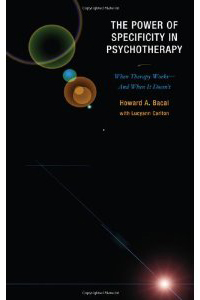

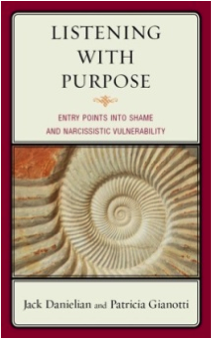


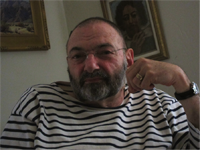
.jpg)

